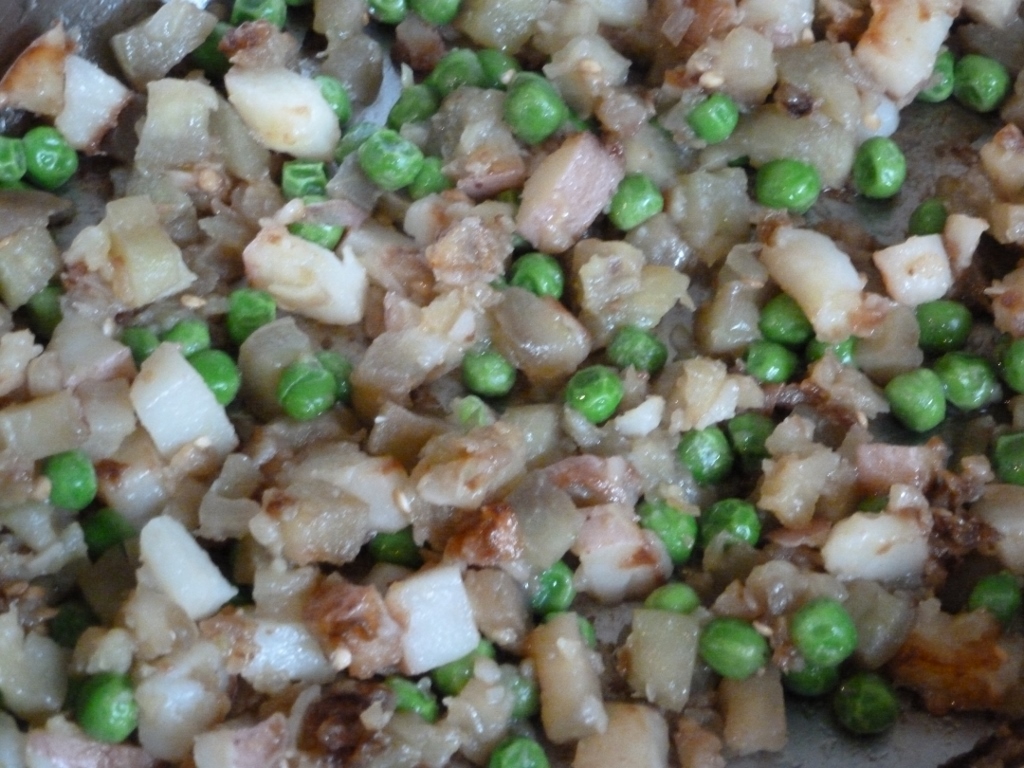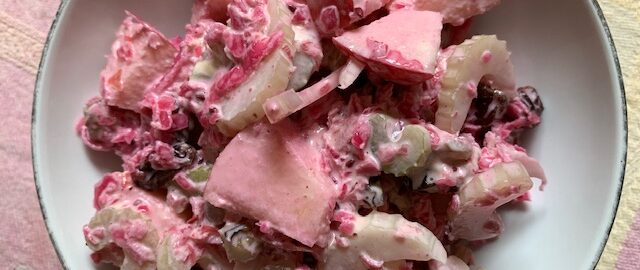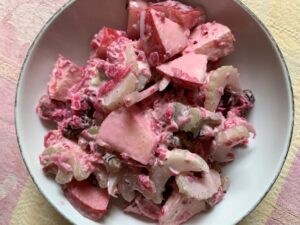If you like potatoes but avoid them because you are watching your blood sugar levels, try diluting the potatoes with other non-starchy vegetables. This way you get to eat your potatoes and feel satisfied but not STUFFED and HEAVY afterwards. This recipe uses eggplant and only 1 potato. It’s easy and fast–if you cube the potato and eggplant small enough (between a 1/4 and 1/2 inch cubes), they will cook quickly. Serve these with turkey burgers and a salad and you have a meal.
Serves 3
1 medium-small eggplant (about 1-1/2 to 2 cups cubed–skin first with a potato peeler, then cut crosswise into 1/4 inch rounds, then cut the rounds into cubes)
1 medium red potato, leave skin on, wash well & cut as described above
1/3 cup frozen green peas
2-3 Tbsp. ghee or olive oil
1/2 tsp. dried onion granules (the Co-op has organic in bulk section)
1/4 tsp. dried garlic powder (Co-op has organic in bulk section)
salt and pepper to taste
Prepare the vegetables as described above. Melt ghee in a large skillet over medium heat. Once hot (don’t overheat or it will smoke–keep an eye on it and add 1 cube to see if it sizzles–as soon as it sizzles it is hot enough), add the rest of the potato cubes. Stir with a metal spatula so potatoes get covered in oil. Cover with a tight fitting lid for 3 minutes and then stir again to prevent sticking. Cover again for 3 minutes and stir again. Add eggplant cubes and spices. Mix well. Eggplant tends to soak up oil so you may need to add another tsp. or 2 of ghee or olive oil if the mixture seems dry and is sticking–stir well again. Cover and use spatula to prevent sticking every 3-4 minutes until potatoes and eggplant are tender. Add peas and stir. Turn off heat and cover for a few minutes. Add salt and pepper to taste. Serve immediately.


 Waldorf salad is one of my favorites. Here’s my new and improved version. I replaced plain raw red cabbage with cultured red cabbage which provides lots of probiotics and increases digestibility of the cabbage. Also, I made my own mayo with good oils. It might seem like a lot of work but remember that 1 head of cabbage will make about 1 quart of cultured cabbage which will be enough to make the salad 4 times. The cultured cabbage will keep in the fridge for 1 month or so. Also, y
Waldorf salad is one of my favorites. Here’s my new and improved version. I replaced plain raw red cabbage with cultured red cabbage which provides lots of probiotics and increases digestibility of the cabbage. Also, I made my own mayo with good oils. It might seem like a lot of work but remember that 1 head of cabbage will make about 1 quart of cultured cabbage which will be enough to make the salad 4 times. The cultured cabbage will keep in the fridge for 1 month or so. Also, y